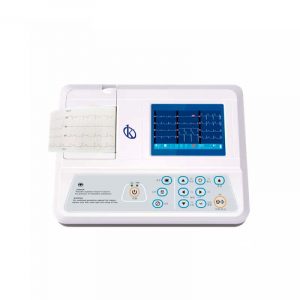Pericarditis or inflammation of the pericardium may present as acute or chronic pericarditis. If inflammation also affects the heart muscle, it is called peritonitis. Acute pericarditis usually lasts up to three weeks. For the diagnosis of the disease, deprive the typical symptoms of this condition, which are characterized by:
- Chest pain.
- Shortness of breath.
- Signs of inflammation such as fever, rapid pulse, and rapid breathing.
- Sharp pain usually occurs behind the breastbone at bedtime and with deep breathing, coughing, or vigorous movement.
Nonspecific inflammatory reactions are found in blood tests when pericarditis is diagnosed. ST-segment ECG changes resembling those of myocardial infarction are common, as are regression disorders of excitation with negative T waves. Peripheral ECG amplitudes are decreased.
Echocardiography can also detect minor effusions due to inflammatory reactions. For differential diagnosis, an MRI may provide more information. For compressive effusions, a puncture—drilling at the site of the effusion—is done to obtain fluid for examination. It is done under local anesthesia.
What causes pericarditis and how is it diagnosed?
The cause of pericarditis is usually unexplained. However, in most patients, the underlying cause is probably infection with certain viruses. This acute viral pericarditis is usually caused by enteroviruses, herpesviruses, adenoviruses, and parvoviruses B 19. In addition to viral pathogens, bacteria (especially mycobacterium tuberculosis, which causes tuberculosis) as well as fungi and parasites (very rarely) are also possible causes of infectious pericarditis.
In addition, autoimmune diseases (for example, rheumatism), cancer (radiation used in therapies), tumors, metabolic diseases such as gout, kidney failure, the consequences of a heart operation, a heart attack may, drugs may be the cause. However, it is possible in some cases, not to find an apparent cause for this disease.
The first thing to do is take the person’s medical history (history) and do a physical examination. For dry, acute pericarditis, the doctor hears the characteristic brushing sound over the heart with a stethoscope. It becomes undetectable as soon as a pericardial effusion form—that is, when the dry form of pericarditis changes into the wet, oozing form. To confirm the diagnosis, the following are helpful:
- The electrocardiogram.
- Ultrasonography of the heart.
- Some laboratory tests.
How are pericarditis diagnostic techniques applied?
The electrocardiogram (ECG) is a very important examination method for the diagnosis of acute pericarditis. Also with the ECG, the changes that correspond to the course of the disease are shown. However, distinguishing it from a heart attack can sometimes be difficult, making this study necessary to supplement with other tests.
Ultrasonographic examination of the heart (echocardiography) is indispensable if pericarditis is suspected. It is not prominent in most patients with acute pericarditis as long as no pericardial effusion has formed. However, if pericarditis is present, ultrasonographic examination provides important information about the size of the effusion and its effects on the heart’s pumping function. Examination may possibly indicate joint disease of the heart muscle.
Laboratory tests are important in differentiating between infarction and acute pericarditis. However, the most important tests that are positive for a heart attack (troponin and creatine kinase) may also be positive for pericarditis if it has spread to heart muscle (pericarditis). Also, a blood count is done, and C-reactive protein, white blood cells, and the sedimentation rate are measured. These laboratory values provide information about acute inflammation in the body.
Other tests, such as a chest x-ray, may also be used to detect or exclude lung disease (for example, tuberculosis, lung tumor) as a possible cause of effusive pericarditis. In other cases, pericardiocentesis may be considered—for example, if a bacterial disorder or tumor is suspected. If additional heart muscle disease is suspected, magnetic resonance imaging or computed tomography may be helpful.
Why use a Kalstein electrocardiograph to diagnose pericarditis?
Diagnosis of pericarditis is often difficult, but it often relies on obtaining electrocardiograms to establish some of the forms of this disease. Kalstein electrocardiograph is a device characterized by its ease of use through a touch screen, with electronics that allows to reduce the noise level of the reading while automatically correcting the drift of the baseline. Other technical aspects of this equipment, as well as the prices, purchase methods and quotation can be consulted at the link HERE

